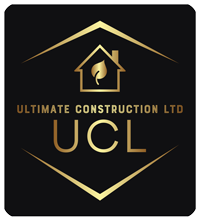In this Article
Housing Technology is Here to Stay
Modern Homes Demand Smart Technology
The importance of adaptability in housing
Access to mortgages
High costs of urban land
The housing crisis
Housing Technology is Here to Stay
While new housing technologies can help cut waste and reduce GHG emissions, they are unlikely to make a dent in the Irish or global housing crisis, unless accompanied by other changes. In fact, prefabricated houses have existed since the early 1900s in the United States, popularized by Sears, which sold tens of thousands of affordable housing “kits.” A century later, prefab housing technology is still considered an innovation that has yet to take off. The reason may lie in the fact that construction is only one piece of the housing puzzle. Here are four elements to remember as we consider adopting new housing tech to solve the Irish and global housing crisis.
Modern Homes Demand Smart Technology
Focus on the customer by expanding options available to families. By emphasizing new construction and homeownership, the Irish and global housing market has become too standardized. Though standardization is often promoted to increase production efficiency and reduce costs, one-size-fits-all may not be the right answer. Case in point: Mexico’s mass production of readymade homes in less-than-desirable locations caused the whole housing market to crash. Many of the units are still empty today. Surely, a market of that size should have more choices.
The importance of adaptability in housing
The COVID-19 pandemic has highlighted the importance of adaptability in housing: being able to add or subtract walls, for example, or layouts that could adapt to the needs of remote work. Beyond new housing construction, many families need access to simple repairs or upgrades to their existing units. Estimates show that two-thirds of the buildings that exist today will be around in 2050—presenting both structural and environmental problems, on top of other features affecting quality of life.
The good news is that technology is already available to address these issues: 3D scans are mapping informal settlements; machine learning software is being used to support countries’ efforts and on-the-ground inspections to efficiently and cheaply identify buildings at risk of collapse. Newer technologies, such as light-reflecting paint and low-cost structural retrofit techniques can go a long way toward making homes safer and greener.
Access to mortgages
Today, most young households cannot access a mortgage to match property prices. They either work in jobs not paying enough and the many self employed being considered a bigger risk to the lending Institutions. Proof of income and down payment requirements also block access to mortgages. Innovations in fintech will help underwrite informal incomes and enable households working in the informal economy to receive a housing loan. In the meantime, exploring options such as blockchain technology to ensure clean land titles or an innovative use of guarantee funds can provide families with informal and irregular incomes access to credit at reasonable costs and provide financial institutions with greater security.
High costs of urban land
The barrier to housing accessibility is often linked to the high costs of urban land, which makes single-family housing expensive. In emerging markets, the issue can be more complex as urban plans are poorly implemented, infrastructure is stretched and land titles, often unavailable. These issues make serviced, well located, and titled land prohibitively expensive.
Developers build homes far from city centers where land remains relatively cheap, making commutes longer and stretching infrastructure even further. Urban policies that incentivize strategic land allocation and formalization, transportation, green building, while taking advantage of proven, cost-effective technological solutions can create livable, sustainable cities. Many large housing markets have learned this lesson the hard way (Mexico and Colombia) and have since revamped their policies to ensure that new housing investments support urban regeneration, sustainable construction, and home improvements. At the end of the day, the greenest home built in suburbia is still more polluting than a classic urban house. To truly cut housing costs and its environmental footprint, construction tech cannot repeat the same housing designs and mistakes that have made our cities unsustainable in the past.
The housing crisis
When it comes to the housing crisis, there are many issues that are undermining the fabric of Irish Society. Technology is always in search of a problem to solve. As we embrace innovative construction technologies, let us not forget that housing is more than bricks and mortar. Solving the Irish and global housing shortage will also require innovations in policy, finance, urban planning and beyond.



